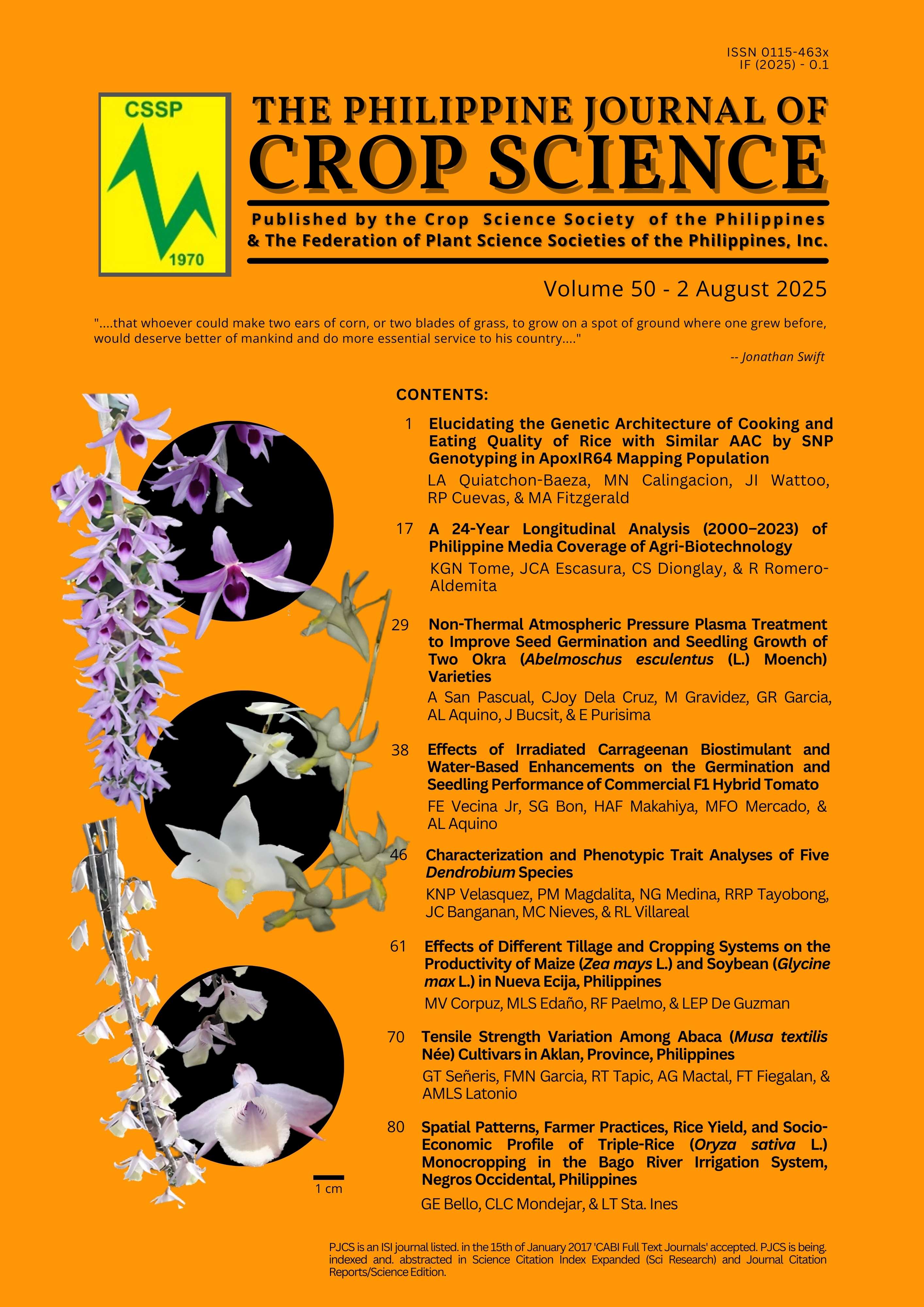Elucidating the Genetic Architecture of Cooking and Eating Quality of Rice with Similar AAC by SNP Genotyping in ApoxIR64 Mapping Population
Abstract
Quality parameters are key indicators for selecting advanced breeding programs. As a core indicator of grain quality, amylose content (AC) does not always provide a comprehensive representation of the pasting profile or cooked rice quality. Apo and IR64 are rice varieties that belong to the intermediate AC class but exhibit distinct cooking and eating characteristics, whereas other grain components are known to be associated with these differences. This study investigated genetic variations in the pasting properties of rice associated with cooking and eating quality traits using genome-wide single-nucleotide polymorphisms (SNPs) in a mapping population derived from IR64 and Apo, which have similar apparent amylose content (AAC). Genome-wide SNPs identified 27 main-effect quantitative trait loci (QTLs) associated with cooking and eating quality parameters on seven chromosomes (1, 4, 7, 8, 9, 10, and 11). The results revealed novel QTLs for AC, pasting properties, and protein content in rice from a population with parents having similar AAC. Moreover, putative functional SNPs in the promoter and 5' untranslated region of the Wx gene were identified via in silico analysis. These findings will contribute to further understanding the genetics controlling the cooking and eating quality of rice, specifically the AC, pasting profile, and protein content.


